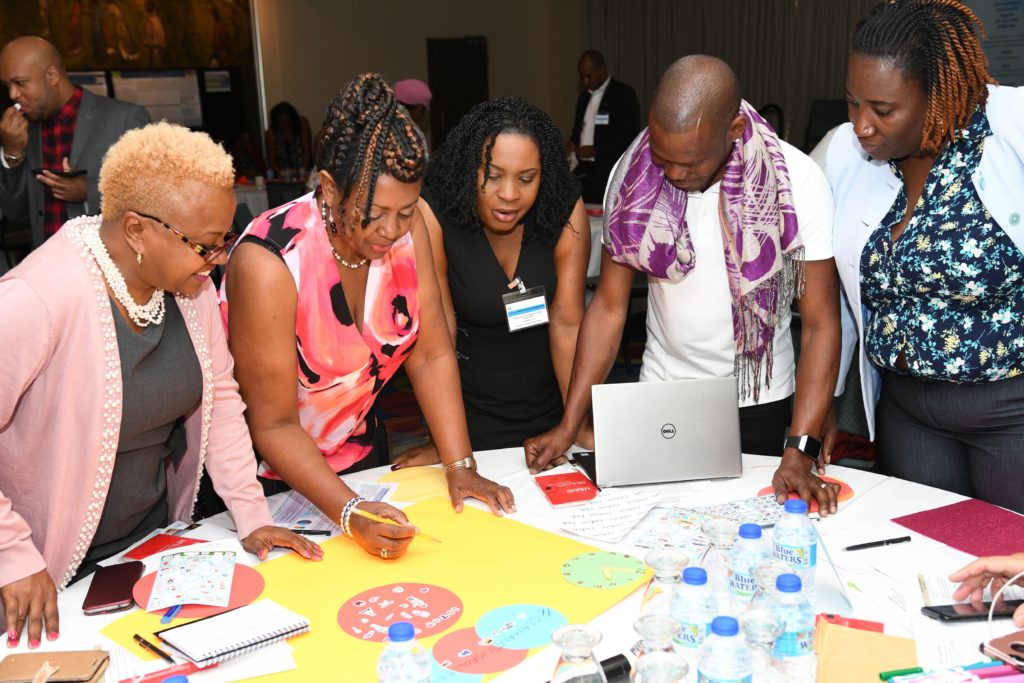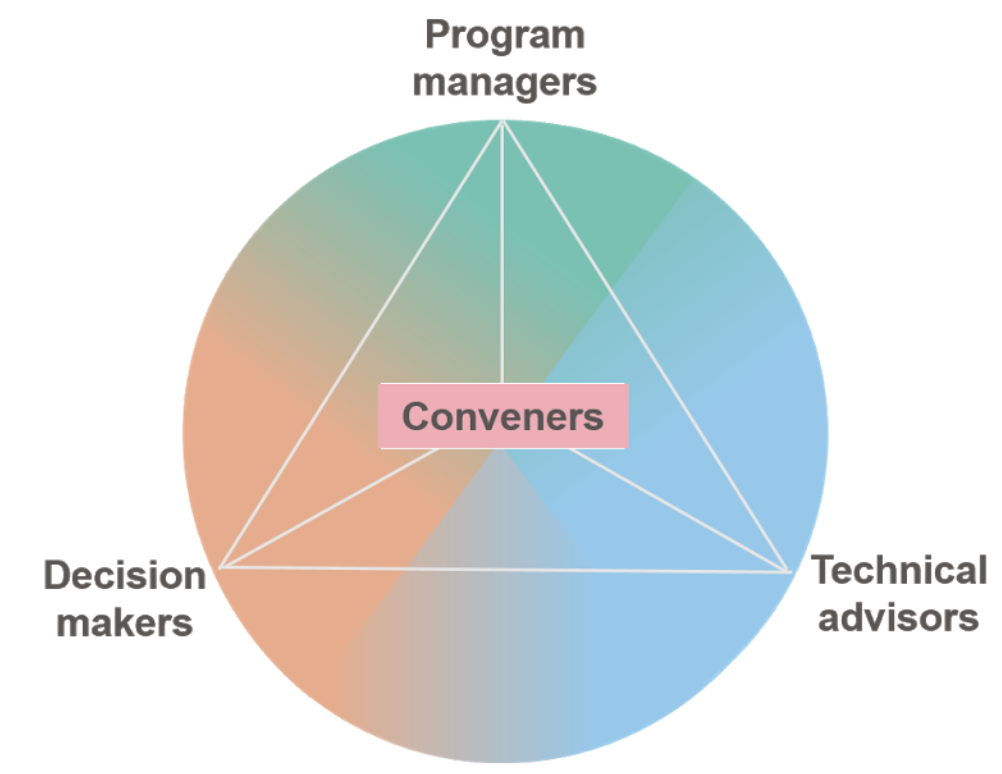Designing Solutions to Get Evidence and Best Practices Into Family Planning Programs

Q&A with Knowledge SUCCESS’s Knowledge Solutions Team Lead
How can we most effectively streamline the way that family planning and reproductive health (FP/RH) professionals find, share, and use knowledge to optimize FP/RH programs? Knowledge Solutions Team Lead Ruwaida Salem breaks down how Knowledge SUCCESS is putting people front and center to design solutions that work best for the FP/RH community.
Can you briefly describe your role as Knowledge Solutions Team Lead?
I oversee the project’s “knowledge solutions,” which encompasses a broad range of activities. It includes co-creating with our audiences, applying behavioral science and gender lenses to our knowledge management work, strategizing and developing our FP/RH technical content, monitoring and evaluation activities, and also producing knowledge management products, such as the Global Health: Science and Practice Journal and Family Planning: A Global Handbook for Providers. We have team leads who manage these activities, and my role is to support their work, problem solve, and build connections between the different activities to make sure we’re maximizing our impact and that we’re learning from each other’s work.
My role in our technical content development focuses specifically on content related to ensuring the quality of family planning services and programming. One topic area that I have personally been drawn to since early in my career is integration. When I worked at a public health research institute in Palestine, we were conducting an evaluation on what was meant to be an exclusively family planning project. However, what we found was that the project actually encompassed a wide range of health services. And this happened naturally, on the ground, based on what the community needed and wanted. Women would come to this rural clinic—one of the only clinics around—not only to access family planning but also to do things like seek treatment for their sick children. This kind of integration makes a lot of sense because women and families have holistic needs. Our field has been trying to advocate for it for some time now—it’s high on FP2020’s agenda, for example.
[ss_click_to_tweet tweet=”While we do have a culture of information sharing within our FP/RH community, we can be a little more systematic and intentional with how we collaborate…” content=”While we do have a culture of information sharing within our FP/RH community, we can be a little more systematic and intentional with how we collaborate and learn from each others’ experiences to avoid duplication of effort and ramp up our impact. -Ruwaida Salem, @fprhknowledge” style=”default”]
“Knowledge solutions” isn’t a term you hear every day. What do we mean by it and what types of solutions do we hope to see?
I do get puzzled looks when I tell people what my job title is. When we say “knowledge solutions,” we mean solutions to help meet people’s information needs. These solutions can vary widely. People tend to think of things like websites, databases, or even guidelines and job aids. But there are a host of other types of solutions that involve more of that human or social interaction—like learning exchanges and share fairs—where you’re having a lot of face-to-face time. It could also include knowledge management tools and techniques like Knowledge Cafés and Peer Assists, which help you problem solve and learn from other peoples’ experiences.
What’s something that you think everyone needs to know about knowledge management (KM)?
It is a very jargon-y term, and people can have a hard time conceptualizing what it looks like in practical terms. I like to tell people that they’re probably already doing KM in the normal course of their work. For example, when you’re documenting your experiences with implementing a project and sharing it with your community of practice through reports and webinars, or writing up your research results in journal articles, those are KM activities.
But what can really make these types of activities impactful is when KM is applied to programs in a very strategic and systematic way, rather than as one-off activities. That means, when you start a program, thinking strategically about the knowledge-sharing gaps within elements that are contributing to the health problem that you’re trying to solve. Then planning around how you can use KM to address those gaps, and designing a KM strategy with clear action plans.
Under the Knowledge for Health (K4Health) project, we shared our systematic process for doing KM in our Building Better Programs guide so that others within the FP/RH community and the global health community at large can learn and apply it.
In your opinion, what is the biggest issue around finding, processing, and sharing knowledge that FP/RH professionals face?
Our experience under K4Health and our recent research led by Busara have shown us that there are two sides to the coin. On one side, people in certain places of the world experience information overload. They are faced with so much information and they don’t have enough time to process it all. In other places, there is a lack of information. People—either within a country or at different levels of the health system—are unable to access information.
There is also this other element where we have many projects, organizations, and donors working in the FP/RH space. They’re all doing really important work that we can all benefit from. And while we do have a culture of information sharing within our community, we can be a little more systematic and intentional with how we collaborate and learn from each others’ experiences to avoid duplication of effort and ramp up our impact.
Was there anything that surprised you about Busara’s research on how people find, process, and share knowledge?
I’d say one of the most important findings that we’re digging more into is potential differences in learning styles by job roles. Overall, the research found that FP/RH professionals’ learning preferences cut across a wide range of formats.
We think these learning styles can play a really important role in how people use information to inform their work. The types of formats that the FP/RH community typically uses to share information are often written reports, articles, and other formats that are best suited for verbal learners. So we’re thinking through other ways of presenting information that accommodate each of our key audiences, no matter their learning style.
Tell me more about the people we’re trying to reach and how you see the project adding value to their work?
Within the international FP/RH community, we’re focusing specifically on the professionals who are designing, managing, and leading programs. We’re looking at four main groups—program managers, technical advisors, decision makers, and conveners.

- Program managers are people who are involved in the day-to-day management of programs that directly or indirectly serve family planning clients.
- Technical advisors typically cut across different projects. They play an advisory role to help projects decide what approaches to use, when they need to pivot, and other strategic decisions along those lines.
- Decisionmakers include policy makers and other types of individuals who are making decisions about programs and budgets—as well as those who influence decisionmakers.
- Conveners are individuals and groups who are tasked with convening a range of FP/RH stakeholders (including members of the other three audiences) to foster collaboration, avoid duplication of effort, and learn from each other.
[ss_click_to_tweet tweet=”We’re co-creating solutions with our audiences to help ensure that what we design will actually work for them and meet their needs.” content=”We’re co-creating solutions with our audiences to help ensure that what we design will actually work for them and meet their needs. This is our commitment to putting our audiences front and center. -Ruwaida Salem, @fprhknowledge” style=”default”]
Our community knows a lot about what works and doesn’t work in family planning, but sometimes it’s a challenge to filter through all that information and cut through the noise. An exciting aspect of our project is applying behavioral science principles to make it easier for these key audiences to access, share, and use that information—and ultimately help improve family planning programs. We’re also co-creating solutions with our audiences to help ensure that what we design will actually work for them and meet their needs. This is our commitment to putting our audiences front and center. We believe that knowledge really is power, and so knowledge management can help solve many of the problems in the family planning landscape, and global health more broadly.
We’re excited to engage with our audiences very intentionally. We started our first round of regional co-creation workshops in East and Southern Africa the week of April 6th. We are also planning workshops in Francophone Africa, Asia, and among headquarters staff in the U.S. in the coming weeks and months. We’re looking forward to learning from our audiences about the key barriers to finding and sharing knowledge that they face—and how we can design solutions of the future to help them get evidence and best practices into programs.




